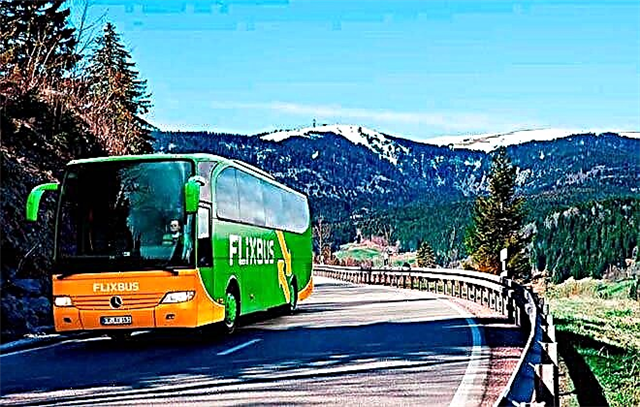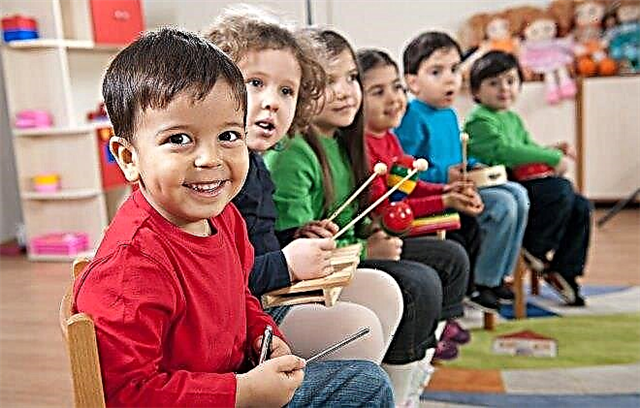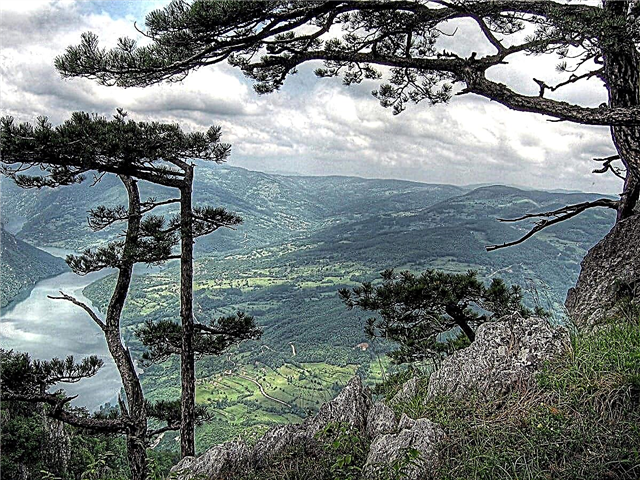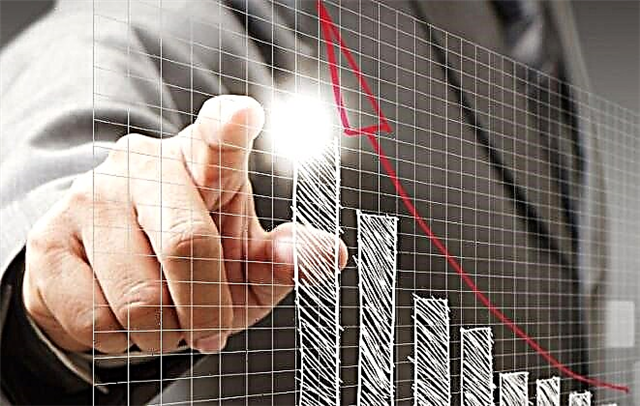The collapse of the USSR slowed down the development of each of its member republics. Some of them managed to get out of the peak relatively quickly, and some still cannot reach the previous level. The economy of Latvia is one of the examples of successful development, therefore it is interesting to consider its key indicators, dynamics and main industry components.

Economic and geographical position of the country
The Republic of Latvia is located in the northern part of Europe. The west and north of the country are washed by the waters of the Baltic Sea and the Gulf of Riga, which is part of it. The northern neighbor of the state is Estonia, the southern neighbor is Lithuania, and the eastern neighbors are Russia and Belarus.
The area of Latvia is slightly less than 65 thousand km2, and the population as of 2021 is slightly less than 2 million people.
The country is a member of the following major international organizations:
- UN (since the declaration of independence in 1991);
- NATO (since 2004);
- European Union (since 2004);
- Schengen Agreement (since 2007);
- IMF (since 1992);
- WTO (since 1999);
- Council of the Baltic Sea States (since 1992);
- Council of Europe (since 1995);
- Northern Investment Bank (since 2005).
The lat was used as the currency from 1992 to 2021, which was then replaced by the euro.
The coastal position contributes to the development of trade by water: for example, the port of Ventspils has long become a regional leader in maritime traffic. Other major commercial ports of the country are located in Riga and Liepaja.
Important land transport arteries linking Scandinavia with Eastern and Central Europe pass through the Baltic state. The most important of these is the E67 Euro route, which runs from Helsinki to Prague through Salacgriva, Riga and Bauska.
The simultaneous proximity of Latvia to Russia, Germany, Poland, and Sweden for a long time determined its status as a country that either served as a buffer between the leading European forces, or was occupied by one of them. But in modern conditions, Latvia has access to rich sales markets in the EU countries, and to cheap resources from Russia.
As for its own natural resources, most of the basic materials for the construction industry are mined on the territory of Latvia, namely:
- sand;
- wood;
- gypsum;
- limestone;
- clay;
- crushed stone;
- dolomite.
 Peat is extracted in significant quantities from energy sources on the territory of the country. In the Kurzeme region, the first stages of oil production are being established, and the exploration of new deposits of black gold continues on the Baltic shelf.
Peat is extracted in significant quantities from energy sources on the territory of the country. In the Kurzeme region, the first stages of oil production are being established, and the exploration of new deposits of black gold continues on the Baltic shelf.
Sometimes small pieces of amber are found on Latvian beaches, but this fossil is much less common here than in neighboring Lithuania.
Deposits of other natural resources in quantities of any significance for the macroeconomic scale have not yet been found on the territory of the country.
Main indicators and structure of the Latvian economy
In order to have an idea of the current level of the country's economy, it is worth evaluating it in its entirety in terms of GDP indicators, budget balancing and the level of production development. Let's consider each of these indicators in more detail.
Dynamics of GDP and other basic indicators
It is most convenient to assess the changes in Latvia's GDP since the acquisition of independence and until 2021 in the form of a table.
| Year | GDP, absolute, USD billion | Growth compared to the previous year,% | GDP per capita, absolute, thousand US dollars | GDP adjusted for purchasing power parity, thousand US dollars |
|---|---|---|---|---|
| 1991 | 9 | – | 3380 | – |
| 1992 | 6 | – 35 | 2277 | 6008 |
| 1993 | 5.2 | – 15 | 2014 | 5466 |
| 1994 | 5.3 | 0.7 | 2101 | 5795 |
| 1995 | 5.4 | – 0,9 | 2155 | 6087 |
| 1996 | 6 | 2.4 | 2408 | 6424 |
| 1997 | 6.5 | 9 | 2660 | 7193 |
| 1998 | 7.2 | 6.5 | 2952 | 7826 |
| 1999 | 7.5 | 2.6 | 3128 | 8220 |
| 2000 | 7.9 | 5.4 | 3329 | 8923 |
| 2001 | 8.3 | 6.5 | 3540 | 9825 |
| 2002 | 9.5 | 7.1 | 4093 | 10839 |
| 2003 | 11.7 | 8.4 | 5095 | 12083 |
| 2004 | 14.4 | 8.3 | 6307 | 13578 |
| 2005 | 16.9 | 10.7 | 7514 | 15683 |
| 2006 | 21.4 | 11.9 | 9638 | 18256 |
| 2007 | 30.9 | 10 | 14056 | 20795 |
| 2008 | 35.6 | – 3,5 | 16389 | 20606 |
| 2009 | 26.2 | – 14,4 | 12200 | 18011 |
| 2010 | 23.8 | – 3,9 | 11216 | 17852 |
| 2011 | 28.5 | 6.4 | 13605 | 19817 |
| 2012 | 28.1 | 4 | 13611 | 21318 |
| 2013 | 30.3 | 2.6 | 14852 | 22450 |
| 2014 | 31.4 | 1.9 | 15584 | 23560 |
| 2015 | 27 | 2.8 | 13554 | 24709 |
| 2016 | 27.6 | 2.1 | 13993 | 25753 |
| 2017 | 30.4 | 10.1 | 15550 | 27702 |
| 2018 | 34.3 | 11.4 | 18472 | 29489 |
An analysis of the data in the table shows that the level of economic development of Latvia in the first years after gaining independence fell sharply - by more than a third, but after 11 years the state managed to return to its previous macroeconomic indicators.
In terms of the nominal value of GDP for 2021, Latvia ranks 99th in the world out of 195. For comparison: Russia, according to the same indicator, is ranked 11th in the world with an indicator of $ 1,614 billion.
If we compare the two countries in terms of nominal per capita GDP, then Latvia is not only not inferior to the Russian Federation, but even slightly ahead of it, taking 50th place in the list against Russia's 62nd. But in the list of GDP by PPP per capita, the two countries usually occupy neighboring lines at about 50th place.
The period of the global financial crisis turned out to be quite painful for the country, which caused the economy to fall in the period from 2008 to 2021. However, only 2009 can be called conditionally catastrophic: in 2008, the fall was almost imperceptible, and in 2010 it was stopped.
By 2021, the country's GDP reached the level of the pre-crisis 2008 and has been growing steadily since then. Moreover, the rate of its growth over the past 2 years has approached a solid 10%, which for a “first world” country in modern conditions can be considered an economic miracle.
It is worth noting that the price of this miracle was a slight increase in inflation: if from 2013 to 2021 the consumer price index (CPI) in the country did not exceed 1%, then in the last two years (2021 and 2021) it came close to 3%.
This indicator, of course, is equally far from the conditions of the nineties, when inflation could be up to 100%, and from the figures of the crisis years, when the CPI was about 15%.
Interestingly, in the entire history of the state's independence, the poverty index did not exceed 2.5%. Currently, this parameter is gradually approaching the figure of 0.5%, which means that the majority of Latvians live far from the poverty line.
When assessing the dynamics of the country's development, one should also take into account that Latvia's external debt as of 2021 is $ 11.7 billion (40.1% of GDP). Until 2007, this figure did not exceed $ 2 billion (then it was about 7% of GDP), and by 2021 it reached 8 billion (34% of GDP of that year).
Thus, the country managed to get out of the 2008 financial crisis relatively quickly and return to the previous level of economic development largely due to external borrowing, which became possible thanks to its membership in the European Union and other influential international organizations.
For this, the country has to pay with its gold and foreign exchange reserves, which have been steadily growing until 2021, reaching almost $ 8 billion, and now have dropped to about $ 4.5 billion.
Budget
 The country lived on a temporary budget for most of the first quarter of 2021. This was due to the fact that at the end of 2021 it was decided to increase the level of wages in some areas of the public sector, which required taking into account the draft document and agreeing with the European Commission.
The country lived on a temporary budget for most of the first quarter of 2021. This was due to the fact that at the end of 2021 it was decided to increase the level of wages in some areas of the public sector, which required taking into account the draft document and agreeing with the European Commission.
The budget of Latvia for 2021, approved in March, gives a forecast for GDP growth at the level of 3%. The government also assumes that this year there will be a decrease in the rate of inflation (this parameter is planned at 2.5%), as well as an increase in the average wage in the country by 8% (as a result, it will amount to about 1,000 euros).
The revenue side of the budget is planned at 9.2 billion euros. Government spending, according to the document, will slightly exceed this amount, amounting to 9.4 billion. Thus, the approved budget contains a planned deficit of 0.5% of GDP.
The structure of the revenue side of the budget is adopted as follows:
| Article | Volume,% of GDP |
|---|---|
| Production and import taxes | 14.2 |
| Income and profit taxes | 6.5 |
| Social contributions | 9.4 |
| Total tax income | 30.1 |
| State property income | 0.6 |
| Other income | 5.1 |
| Total income | 35.8 |
The analysis of the revenue side allows us to conclude that the reforms carried out in the country in the early nineties made it possible to minimize the number of state-owned enterprises. As a result, the state receives almost half of its income from taxation of private business.
It is also worth noting that up to 60% of collected taxes and fees do not go to the central budget, but remain at the disposal of local authorities.
The expenditure part of the main financial document adopted for 2021 is as follows:
| Article | Volume,% of GDP |
|---|---|
| Public services | 4.2 |
| Defense | 2 |
| Ensuring law and order | 2 |
| Economic development | 4.6 |
| Ecology | 0.4 |
| Communal infrastructure | 0.7 |
| Health care | 4 |
| Culture and religion | 1.3 |
| Education | 5.4 |
| Social payments | 11.9 |
| General expenses | 36.5 |
These data indicate that almost a third of the budget will be spent on helping socially vulnerable groups of the population. In fact, the role of the Latvian state is reduced to helping the most needy citizens, as well as providing the population with security, education, cultural and medical services.
Key production
To understand why a small Baltic country manages to achieve frankly good economic indicators, it is worth finding out what is produced in Latvia.
The country's largest enterprise is state-owned Latvenergo, with assets worth 1.7 million euros. This company is engaged in the import, production and sale of electricity both in Latvia and in neighboring countries.
The second place in the ranking is occupied by JSC Latvijas valsts meži, which is engaged in the forestry industry, namely, the regulation of deforestation.
Further, the following companies are located:
- MikroTik (production of routers and other network hardware);
- Latvijas dzelzceļš (State Railways);
- local branches of Swedbank and SEB Banka;
- telecommunications operators Lattelecom and Latvijas Mobilais Telefons;
- Uralchem Trading (local subsidiary of Uralchem, which maintains the port terminal and trades in fertilizers);
- Olainfarm (pharmacology);
- Elko Grupa (microelectronics and other parts for computing equipment);
- ORLEN Latvija (oil refining);
- Maxima (supermarkets).
Thus, the largest industrial enterprises in Latvia operate in areas such as logistics, energy, chemicals, forestry and electronics. Let's consider the general structure of the country's economy in more detail.
Sectoral structure of the economy
According to their contribution to GDP, all major sectors of the Latvian economy can be ranked as follows:
| Sector | Share of GDP,% |
|---|---|
| Service sector | 45.2 |
| Industry | 16.8 |
| Transport | 10.1 |
| Construction | 6.7 |
| Banking and finance | 4.5 |
| Agricultural and forestry sectors (cumulative) | 3.3 |
| Other sectors (cumulative) | 13.4 |
At the same time, the share of small and medium-sized businesses in the country's GDP reaches 77%. Let's consider separately the key of these industries.
Banking sector
 The banking system of Latvia as of 2021 is largely represented by large branches of Swedish banks: Swedbank with assets of 5 million euros and SEB Banka, whose assets are 3.5 million euros. The local Rietumu Banka, whose assets are also aiming for 3.5 million euros, is breathing on their backs.
The banking system of Latvia as of 2021 is largely represented by large branches of Swedish banks: Swedbank with assets of 5 million euros and SEB Banka, whose assets are 3.5 million euros. The local Rietumu Banka, whose assets are also aiming for 3.5 million euros, is breathing on their backs.
The assets of another Swedish bank, Nordea Bank, are slightly less (3 million euros).
Also, the top ten includes:
- Citadele Banka (assets of 2.6 million euros);
- DNB Banka (2 million euros);
- NORVIK BANKA (assets - almost a million €);
- BlueOrange (assets of € 0.6 million);
- Danske Bank Filiale Latvija (assets of € 0.5 million).
The average lending rate in the country ranges from 8 to 15%. The total profit of the country's banks reaches 250 million euros per year.
Production
The most developed industries in Latvia are:
- the timber industry, which makes up almost 27% of the entire sector;
- food industry - 19%;
- chemical industry - 13%;
- metallurgy - 13%;
- furniture production - 9.5%;
- electronics - 5.5%;
- production of fabrics and products from them - 5%;
- mechanical engineering - 4%;
- production of medicines - 3%.
Such a high share of the forestry industry is not surprising if we remember that forest areas occupy about half of the country's territory, and due to the expansion of farms, this figure is increasing by 1% per year.
Mechanical engineering in Latvia is represented by:
- shipbuilding (Riga Shipyard and Anytec Productions, which produces boats);
- locomotive building (Daugavpils locomotive repair plant);
- the automotive industry (Dartz Motors, which produces luxury armored vehicles of the SUV class);
- production of agricultural and communal machinery (Bucher Schoerling Baltic and Zieglera mašīnbūve);
- aircraft construction (Pelegrin company, which produces high-speed ultralight aircraft).
The light industry of Latvia for the most part consists of electrical industries, which, in addition to the above-mentioned MikroTik and Elko Grupa, also include:
- SAF Tehnika (deals with equipment for information transmission systems);
- Rebir (household and construction power tools);
- Jauda (equipment for utility and industrial power grids);
- Mass Portal (3D printing systems);
- as well as Volburg, Hansa Matrix and Sidrabe.
This specialization is due to the fact that in the Soviet years the famous VEF plant operated in the country, which for many years was the leader in the production of electrical engineering in the USSR.
Food industry in Latvia produces two thirds of its products for sale on the domestic market, exporting only the remaining third. Most of the sector is occupied by small and medium-sized enterprises.
The most common products in the sector:
- canned food (in particular, the famous Riga sprats);
- cheeses and other dairy products;
- fruits and berries;
- meat and products of its processing;
- sweets;
- beverages;
- processed products of grain crops.
Agricultural sector
 Agriculture in Latvia is represented mainly by farm land, the number of which is about 84 thousand. The total area of agricultural land is slightly less than 1,900 thousand hectares.
Agriculture in Latvia is represented mainly by farm land, the number of which is about 84 thousand. The total area of agricultural land is slightly less than 1,900 thousand hectares.
The grain yield reaches 2.7 million tons per year. Vegetable production - 200 thousand tons per year.
Traditionally, animal husbandry is an important sphere of the country's agrarian complex: it accounts for more than a third of all income from agriculture. Cow farms occupy 50% of the country's agricultural land, provide 2% of GDP and create jobs for more than 5% of the country's population.
Also, about 700 million tons of eggs and about 85 million tons of meat are produced in Latvia per year.
Tourism industry
Tourism in Latvia is well developed in Riga, which is rich in historical sights (after all, the city was founded in 1201) and coastal Jurmala, where tens of thousands of people come annually thanks to the warm summer weather, clear waters of the Baltic Sea and many entertainments.
There is something to see in other cities: for example, near Bauska there is the Rundale Palace, which was erected by the famous Rastrelli, and in Ventspils you can admire the real castle of the knights of the Livonian Order.
So far, tourism brings the state about 2% of GDP, but, according to forecasts of leading experts, in the coming years this area will experience significant growth, especially considering that the Latvian government is going to invest budgetary funds in the development of tourism infrastructure and restoration of recreational facilities.
Unemployment rate
The employment of the population of Latvia is quite high on a global scale and is comparable to the regional average: as of 2021, the unemployment rate in the country is about 7%. At the same time, this indicator is steadily decreasing - as early as 2021, 20% of the working-age population did not have an official job.
The size of the unemployment benefit in the Baltic country depends on the length of service and the previously received income, and besides, it is paid only in the first 9 months of forced idleness and is gradually reduced by 2 times.
So, a person who worked for 1 to 9 years in the first 3 months will receive 215 euros, and in the last three the amount of payment will be reduced to 107.50 euros. Persons with more than 30 years of experience can count on an allowance of up to 280 €.
Foreign trade balance
 Exports and imports in Latvia during the entire period of its independence have been unbalanced: the country has always had a negative foreign trade balance, which means that it imported more than it exported.
Exports and imports in Latvia during the entire period of its independence have been unbalanced: the country has always had a negative foreign trade balance, which means that it imported more than it exported.
The largest gap was recorded in the crisis year in 2008: the country imported goods and services worth $ 18 billion, and sold only $ 11 billion.
As of 2021, the foreign trade deficit is gradually decreasing and amounts to about $ 4 billion.
In the export structure, the most important positions are:
- timber and coal - they account for up to 18% of exports;
- electrical equipment and devices - 11%;
- machinery, large industrial equipment - 6%;
- vehicles - 5%;
- energy carriers - 4%.
The country imports mainly the following goods:
- electronics - 11% of imports;
- industrial equipment - 10%;
- transport - 10%;
- fuel - 9%;
- medicines - 4%.
The largest buyers of goods from Latvia are traditionally:
- Lithuania - up to 19% of all exports;
- Estonia - 12%;
- Russia - 8%;
- Germany - 7%;
- Sweden - 6%.
Most of all goods are imported by Latvia from the following countries:
- Lithuania - up to 18% of imports;
- Germany - 12%;
- Poland - 11%;
- Estonia - 8%;
- Russia - 8%.
Conclusion
Despite its small size and almost complete absence of minerals, Latvia is one of the hundred largest economies in the world, and in terms of GDP per capita it is at the level of Russia. The country managed to achieve such indicators due to decentralization, privatization while maintaining control over key enterprises, the development of transport, logistics, energy and electrical sectors of the economy and the service sector, as well as reasonable attraction of foreign loans.
The main problems of the economy of this state are a negative foreign trade balance and external debt, which is about 40% of GDP. However, the measures planned by the Latvian government to attract investment, create new jobs and develop the tourism industry make it possible to predict that the country will be able to solve these problems in the foreseeable future.











